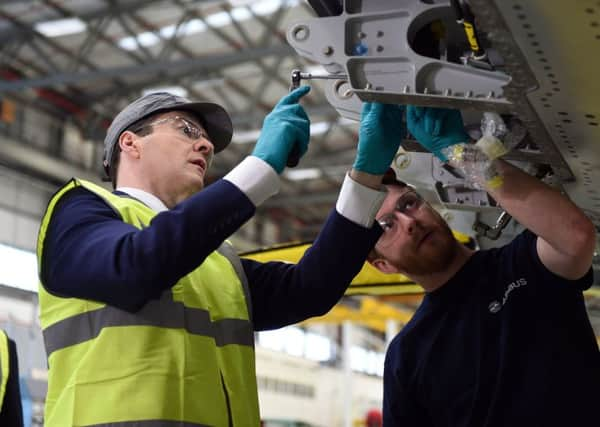Airbus shrugs off China woes in efficiency drive


Tom Williams, Airbus’s Scots-born chief operating officer, said the challenging economic backdrop meant he had told his managers that it was “important not to be complacent” even though airline customers were in an up-cycle.
“We are a business that continues to grow despite the world economy not growing at the pace we would want,” he told Scotland on Sunday.
Advertisement
Hide AdAdvertisement
Hide Ad“We have a significant business in China, so it is something we watch carefully. Also the rest of Asia and South America.
“But my priority over the next two years will be an efficiency drive. We don’t see the need to have a significant change in head count in our business. But we want the head count we have to achieve higher output.”
Toulouse-based Airbus employs a total of about 10,000 in the UK at its main plants in north Wales and Bristol, and spends about £400m annually with suppliers north of the Border – the largest being Spirit Aerosystems in Prestwick, which provides wing components for the A320 and giant A380 planes.
Chancellor George Osborne joined Williams last Thursday to announce a £37m investment in a new Wing Integration Centre at the Airbus site in Filton, Bristol.
The firm has not divulged a financial target for the efficiency drive. But Williams, promoted to COO in January last year, said by 2017 the aim was to produce 50 sets of wings and fuselages a month for single-aisle planes, and 60 by 2019. It produces 44 a month now. Airbus also plans to double the number of A350 long-haul plane bodies it produces a month from five now to ten by 2017.
It is part of an attempt by the company, which dominates the industry with rival Boeing, to double its return on sales to 10 per cent by 2020.
Williams said Airbus was also confident of withstanding the current economic headwinds from emerging markets. He said airline passenger growth had steadily averaged 4 or 5 per cent annually since the 1970s, despite temporary slowdowns after events “such as the SARS epidemic, the Asian financial storm and 9/11”.
The group recently announced that it produced 635 aircraft in 2015, slightly ahead of the previous year.
Advertisement
Hide AdAdvertisement
Hide Ad“When airlines are buying planes it is for 20 years or more, it’s a long-term decision, not about a year or 18 months,” Williams added. “Look at China and the growth of its middle class and infrastructure. We think that will go on. We watch these things with caution, but nothing has made us decide to change our plans.”
He believes the Chinese will get into the mainline civilian aerospace business. “Long-term we will see a challenge from places like China. Even today, China is very influential in the aircraft leasing and financing market.”
The oil price fell to $27 recently, recovering to about $35 this weekend.
But Williams, the first Briton to serve on the Airbus parent group executive committee, said he did not foresee a big fall-off in orders when fuel costs rise again. “I think airlines will make decisions on a price of about $80 a barrel. It’s a number I hear mentioned a lot,” he said.